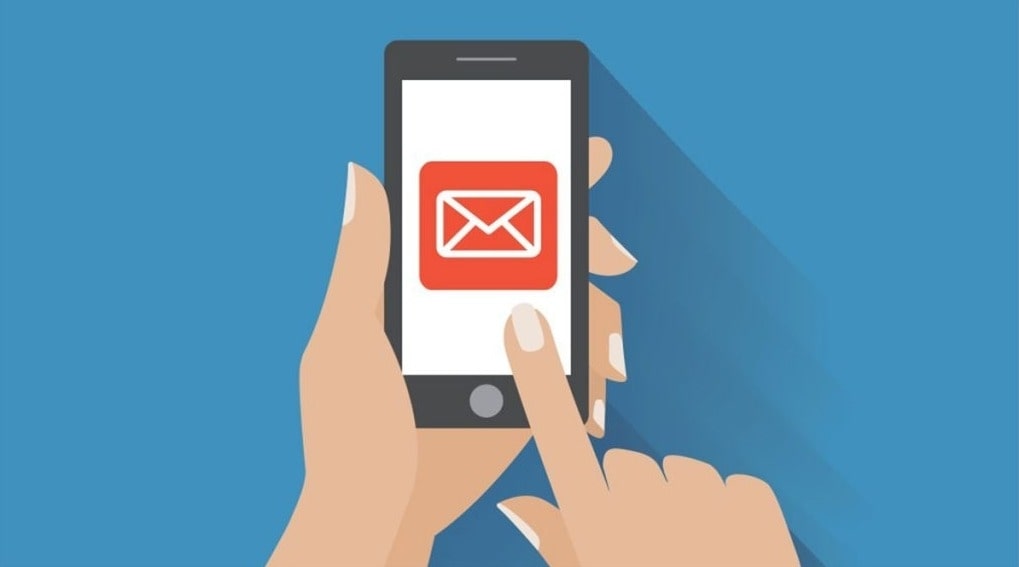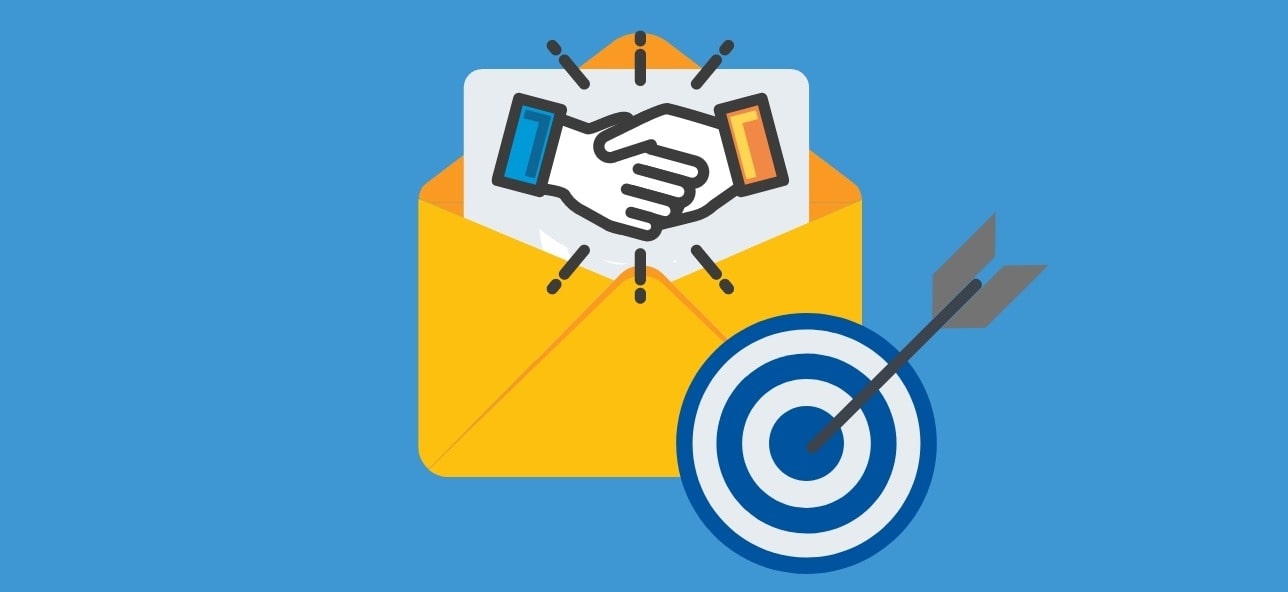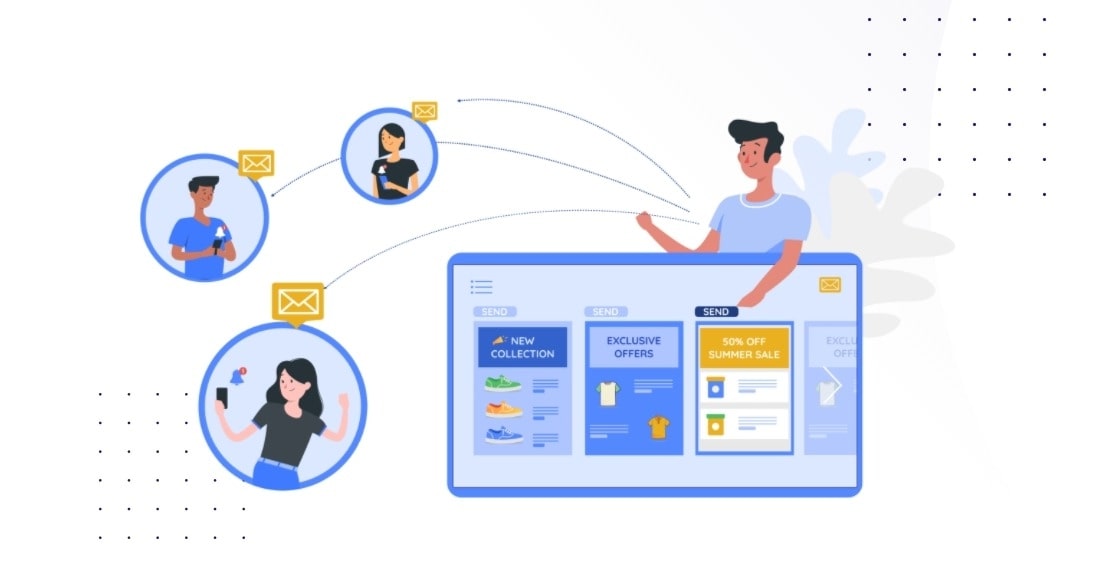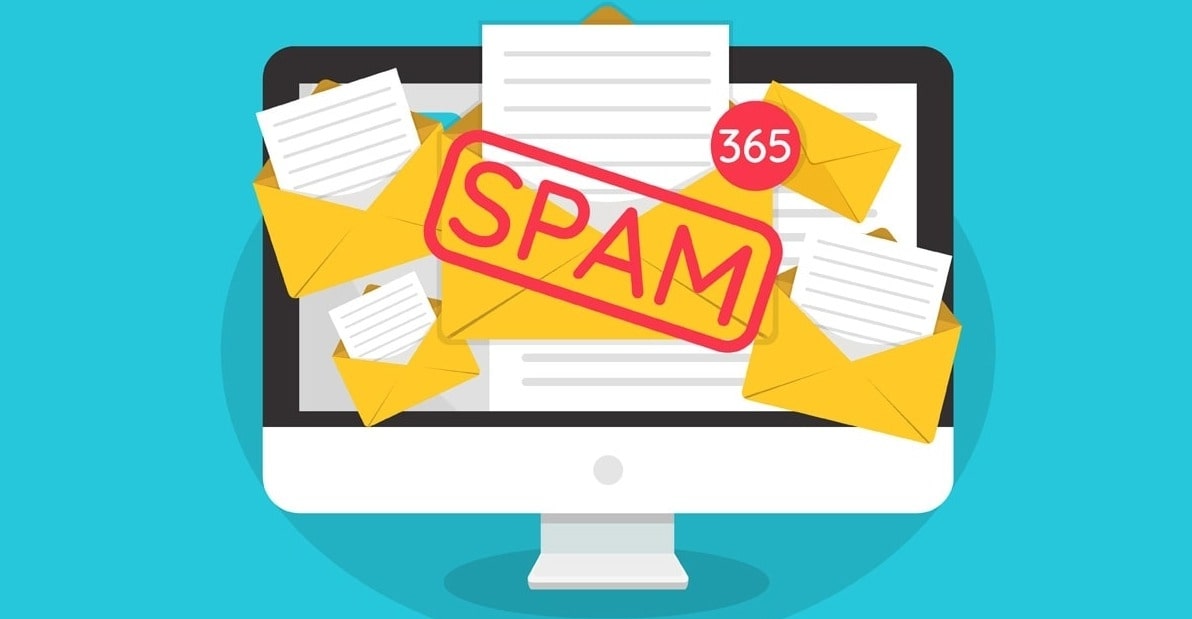The Must Know Statistics On Email Marketing!
2021 is coming right around the corner. Is your email marketing strategy ready for a new year with many changes? While no one can predict what will happen, you can look at the statistics and trends to get a good head start. After all, marketing is much about adapting to the industry’s flow and achieving your objectives.
The impact of email marketing is much more than just getting your messages into subscribers’ inboxes. With limited resources, emails remain one of the most valuable tools for any eCommerce company. Well, if you don’t believe it, this article has many numbers to prove the credibility of email marketing.
Monitoring these kinds of statistics is the key to form a solid strategy year after year and optimize your marketing efforts. As we close 2020 and look ahead to a hopeful 2021, let’s see the must know statistics on email marketing to take your email campaigns to the next level.
Let’s go!
What is email marketing?

In case you are new to the subject, email marketing is the practice of using emails to promote a brand, product, or service. Through time, companies have found ways to make emails work more effectively. You can now use email marketing to develop relationships with current customers while reaching out to new prospects.
Being a cost-effective marketing tool, email marketing allows eCommerce businesses to keep their subscribers informed and, more importantly, personalize the marketing messages. It is persuasive, content, and can achieve great results with the right approach. While digital marketing is getting more and more expensive, email marketing is still useful on a personal level without raising the cost.
A robust email marketing app is a good starting point to explore the power of email marketing. Introducing our app – AVADA Email Marketing - can help you create beautiful emails while targeting different audience segments on autopilot. Click on the link, and you can start using the app for free.
But now, let’s get back to what you came here for - statistics on email marketing.
The must know statistics on email marketing
Billions of emails are sent every day. Needless to say, there is a lot of data on consumers coming from analyzing emails all around the world. So, I took the time to research and scanned all the statistics available on the web and included them in this article. These numbers about emails should give you an idea of how email marketing plays a vital role in the modern eCommerce world and your industry.
General email marketing statistics

First, let’s take a look at some basic statistics on email marketing and email usage. Many have claimed that email marketing is dead with the arrival of digital marketing, but numbers seem to signal that it is still alive and well.
There are 3.9 billion email users daily, and this number is expected to reach 4.3 billion in 2023. A lot of these users can be your customers, with 254.7 million users in the U.S alone. With a new generation of users becoming more and more tech-savvy, email is still a convenient communication tool with consumers.
Plus, there are 293.6 billion emails sent every day, which is expected to rise more every year. That is a staggering number of emails, and email marketing seems to be here to stay. If you are an eCommerce company and know that your customers are using emails, it is hard to ignore the potential of a good email marketing campaign.
And the millennials seem to be using emails too, with 73% of them prefer communication from eCommerce businesses via email. In comparison, 58% of consumers would check emails before doing anything else to start the day. With mobile phones, users are now able to check emails everywhere and at any time.
Knowing that, let’s see the statistics on mobile email marketing.
Mobile email marketing statistics

Devices like tablets and smartphones make checking inboxes so easy, which is why mobile devices accounted for more than 41.9% of all read emails. Young people are more likely to check their emails on mobiles. In fact, 40% of them under 18 years of age always open emails on smartphones.
Smartphones are the most common devices to check email (81%), while others use tablets (21%). Which is why a mobile-optimized experience for your emails is essential.
But, just because smartphones are getting more popular, people won’t stop checking emails on their desktops. In fact, 74% of users check emails on laptop/desktop with most of the demographic being over 35 years old. If your users read emails on mobile then on desktop again, there is a 65% higher chance of them clicking through.
That can be a bad news if you haven’t optimized your emails for mobile devices. 42.3% of consumers would delete your email if it is not optimized for smartphones. All your hard work creating emails can go to waste because of this, so don’t think too much about getting an email marketing app that offers responsive email templates that can look great on any screen.
More than that, a good email marketing app can automate your campaigns, making your strategy more effective and less time-consuming.
B2B and B2C email marketing statistics

B2B businesses know that email marketing is a powerful tool because businesses tend to open emails way more often. By using emails, companies can send relevant content to subscribers and educate them on their products/services, eventually converting them into customers.
Because B2B consumers have a longer sales lifecycle, emails become a cost-effective and long-term approach. So much that 81% of B2B marketers consider email marketing the best way to send content and newsletters. Also, 87% of B2B marketers agree that email is their top free organic content distribution channel.
Still from the research above, the second most-used technology B2B marketers use for content marketing is email marketing softwares. Roughly 85% of B2B marketers claim to work with tools. This is easy to understand, with personalization and automation, emails are incredibly effective. In addition, B2B emails have a 23% higher open rate than B2C emails.
That said, email marketing still works wonders for B2C companies. The same approach can still apply, nurturing prospects, boosting engagement, converting subscribers, improving customer retention, and more.
80% of B2C businesses believe that email marketing is helpful for customer retention. While 59% of recipients say that marketing emails have influenced their purchasing decisions. eCommerce businesses, of course, should take the most advantage of emails since it is a main channel to communicate with consumers.
In fact, consumers check their emails for 2.5 hours each day while at work. And consumers also believe that emails are here to stay, even 10 years more than Facebook, Twitter, and cable channels.
So, if you are a B2C company, an email marketing approach is beneficial. If you also have an abandoned cart email tactic and personalized promotion tactic, you can connect the best with consumers’ needs. Research also shows that 42.3% of Americans subscribe just to receive savings and discounts, so sending some promotions is expected.
With the statistics above, whether you are in B2B or B2C business, you know that you can use email marketing to connect with the target audience. And don’t forget to automate an abandoned cart email campaign. A series of 3 abandoned cart emails yield 69% more orders than just sending one email.
AVADA Email Marketing has a three email abandoned cart template, just letting you know.
Statistics on email marketing by the industry

Many businesses use some form of email marketing automation. Let’s find out which industry gains the biggest benefits from applying email marketing.
Each industry has its own statistics for emails, but the average open rate for all industries is around 21%. Open rate shows the percentage of recipients that opened the emails when received. The higher the open rate is, the better the subject line is. Meanwhile, the average click-through rate for all industries is 2.62%. The successful click-throughs show how relevant your emails are to get recipients check out for more.
For that matter, the industries that have the highest open rates are nonprofit (20.39%), fishing, forestry, hunting, and agriculture (20.13%), government (19.79%), and then healthcare (19.12%). Similarly, these industries have the highest click-through rate.
For eCommerce, the average open rate is 15.68%, and the average click-through rate is 2.01%. But, don’t worry, you have plenty of chances to increase these statistics with your email campaigns. See the next section to know the magic of email with its features and performance statistics.
Email marketing performance statistics

If you wonder if email marketing is worth your investment, this section will tell you the answer. Let’s see some email performance and return on investment statistics to prove the true benefits of email marketing.
30% of email marketers all around the world consider email marketing as having the highest ROI. For 1$ spent on email marketing, you can make $44 back, which is equivalent to a 4400% ROI. That is impressive.
Some more email marketing performance statistics are:
- Email is 40x more effective than both Facebook and Twitter combined in acquiring new customers.
- Shoppers can spend 138% more when being marketed through emails, compared to those who do not receive offers through emails.
- Emails accounted for 19.8% of all eCommerce transactions
Emails still remain as a high performing channel mostly because of the personalization approach. The next section will delve into the personalization and segmentation statistics of email marketing.
Email personalization and segmentation statistics

Personalized-focused emails always perform better than those who don’t. By segmenting your audience into relevant groups, you can then send more personalized messages, resulting in better open rates, click-through rates, and even conversion rates. Customers just love getting offers that suit their needs and interests.
In fact, emails having personalized subject lines have 50% higher open rates. To delight customers and create more relevant email content, 77% of marketers agree that they should send personalized content to the subscribers. You can also personalize emails based on gender, age, and activities.
And for a good reason, personalized emails see 6x higher transaction rates! When having relevant emails, customers are much more likely to react and buy from your business. Simply start by segmenting your audience.
Segmented email campaigns earn 100.95% higher click-through rates and 14.31% higher open rates than non-segmented campaigns. When properly targeting the audience, marketers can have 3x more revenue per email. Which may be why 33% of companies segment their audience, based on behavior, demographics, and exclusive markets.
When you have highly personalized emails for each user, you have a powerful message that potential customers are hard to pass by. So, how do each component of an email affect the personalization performance of emails? Let’s see that in the next section.
Email component statistics

Aside from personalization, there are other factors that make users want to engage with emails.
First, as mentioned above, we have the subject line. This is the first thing that email readers see and decide whether to open an email or not. 47% of subscribers decide solely on the subject line. First impressions are really important.
If you want to create a good first email impression, try including the recipient’s name in your email’s subject line. Data suggests that your open rates can increase by 18.30%. Also, avoid using words like “reminder”, “help”, or “percent off’, which have been found to negatively affect the open rates.
Emojis won’t hurt too, as they can increase the open rates by 56%, compared to text-only subject lines. But only 6.9% of all email subject lines contain an emoji, so you have a good chance to stand out in the inbox with some smiley faces.
Second, we have to talk about email content and calls to action. Email subscribers have a 3.9x more chance to share your content on social media, while 4.4% of visitors from email would buy something. A quick tip is to include social sharing buttons in your email, which can increase the click-through rate by 158%.
Also, including video and images provide a better reading design. Videos in your emails can boost the click-through rate by 300%. But, be careful, since more images and videos can decline the click-through rate since readers have too many things to focus on. They may even unsubscribe from your list if they find the content unreadable.
The main three reasons for people to unsubscribe from an email list are (1) too many emails, (2) no longer relevant information, and (3) brand is unrecognizable or can’t remember signing up. Which is why a personalized email experience is essential.
Some suggestions to optimize your email components are:
- Try sending marketing emails on Tuesday, based on research. Thursday is the second best day.
- The best time to send emails for many marketers is 10am.
- Focus on increasing engagement, since 54% of marketers believe in it.
The best approach will still depend on the type of audience you have, but this is a good start. A/B test your email campaigns with your email service provider and you can see which works best for your brand.
Email spam statistics

Lastly, how do you make sure your email messages get into subscribers’ inboxes? You need to stay out of the spam folder. Here are some stats to show that you need to learn about email spam best practices:
- 45% of all emails sent are considered spam.
- 14.5 billion emails everyday are spam.
- For every 12.5 million spam emails, one gets a response.
- 69% of email recipients can tell an email is spam or not based on the subject line.
The number of spam emails will only increase over time. You can send emails only to subscribers who have opened or clicked one of your emails during the last six months, which will help you decrease the number of emails that go straight to the spam folders. Segmentation and personalization also help customers identify that the email is for them, not a mass spam effort.
Final words
That is a wrap! With the new year coming soon, I hope these email marketing statistics can help you supercharge your campaigns in 2021. If you are ready to kick things off, check out this guide on Creating An Email Campaign That Highly Converts. There are many more guides on email marketing in our AVADA blog, feel free to check them out!
And remember, if you need help automating your email marketing campaigns with the best templates, AVADA Email Marketing is a free to use tool that can create highly personalized emails series for your store’s audience. Get started with our app today to better serve and grow your list.
New Posts







